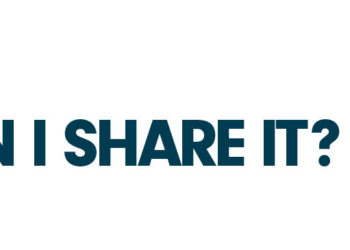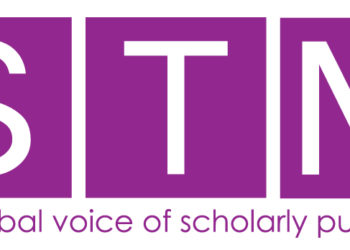Today’s Guest Post explores toll-free linking as a way for publishers to enable authors to share works published in subscription journals. Guest blogger Todd Reitzel has worked in publishing at several STM and social science associations, most recently the Association for Psychological Science. He may be reached at tdreitzel@gmail.com.
The recent controversy over the American Psychological Association’s Digital Millennium Copyright Act (DMCA) take-down notices reminds us about the tensions to be negotiated between author interests and publisher interests. Authors are generally interested in getting their content out into the research community and ensuring that their content is accessible. Publishers are generally interested in getting out content that’s useful to the research community and ensuring that their investment in the content reaps value that sustains the endeavor.

Over the past few years, many dimensions of cooperation between authors and publishers have emerged, including offering exclusive licenses to publish (ELPs) and Creative Common licenses as an alternative to copyright assignments, and allowing article postings on personal sites, on university sites, and in university repositories. These practices are allowed by many publishers, and some authors may practice these whether the publisher allows it or not. Many publishers also help authors fulfill grant funding requirements (eg, the NIH deposit requirement to PubMed Central) by making the article deposit for the authors or participating in CHORUS to help authors comply with public funding requirements.
One longstanding tool of cooperation between authors and publishers is an underutilized one: the toll-free link. Toll-free links lead to the version of record on a journal’s publishing site and constitute an all-around win addressing both author interests and publisher interests.
Toll-free links work by giving full-text access to a given article to anyone who clicks on it. If a publisher provides a toll-free link for an article to its author, the author can place that link on her or his website or online CV, in the author’s institutional repository, or even in a third-party repository.
A toll-free link serves an author’s interests because it provides immediate access to her or his content to anyone in the community.
The link leads to the version of record on the publisher’s site, giving full-text access to a specific article without giving access to the rest of the journal. An expiration date may be put on a toll-free link, if the publisher chooses. And some systems can customize a link to work only when placed on a certain site (eg, the author’s CV), again only if the publisher chooses.
A toll-free link serves an author’s interests because it provides immediate access to her or his content to anyone in the community. Because the access is to the version of record, it reminds the community that the article has been validated through peer review.
A toll-free link also serves a publisher’s interests because it brings the community to an article’s version of record, where the publisher logs the online usage. Healthy online usage is one key indicator for demonstrating content value, and for most publishers it is a top priority.
Content usage through toll-free links may not get included in librarians’ usage reports that help them decide whether subscribing to a given journal is a good purchase. That said, bringing the community to content under a journal’s or publisher’s branding can serve as a loss leader, a sample of what the journal and publisher offer, and may lead to increased demand for content under that brand. So a toll-free link can be a marketing tool.
So why aren’t toll-free links used more extensively? They are available on many major publishing platforms, including HighWire Press and Atypon, and some independent publishing platforms such as the Association for Computing Machinery, which has nicely branded its link service as the ACM Author-izer. Some major platforms, however, do not offer toll-free links, and some major publishers don’t take advantage of their platform’s ability to generate the links. Alternatively, Wiley and Springer Nature have begun offering PDF views through ReadCube, but those don’t allow printing or saving, whereas toll-free links usually allow full use of features.
Two associations I’ve worked for, the American Educational Research Association and the Association for Psychological Science, offer a toll-free link to any author who requests one, but those organizations also use the links to lead users from their association websites to key research content in their journals.
There can be some administrative challenges to toll-free links. For example, when a journal moves to a different platform, links must be regenerated and redistributed to their original recipients. But content management systems can help publishers manage their toll-free links, thus create new replacement ones. When SAGE Publishing moved the Association for Psychological Science journals to a new platform recently, SAGE used its toll-free link records as the basis for generating links on the new platform.
The link regeneration process was not without some effort, but isn’t it better to put effort into something that benefits both authors and publishers instead of something that creates tensions?
Correction: Post above has been corrected to remove a mischaracterization of ReadCube, which stated that its links were time-limited, whereas they can be both time-limited and perpetual.
Discussion
14 Thoughts on "Guest Post: Toll-Free Links Should Be a Win for Everybody"
NB: Silverchair also offers toll-free links and the publishers on our platform use them extensively. Just want to make sure we’re not lumped in by omission to the platforms that “do not offer” these links.
FOR THE EDITOR: Maybe I’m a bit touchy because it is 99 degrees down in Charlottesville today, but this is the 3rd or 4th article in a row in the Kitchen that lists examples of “major publishing platforms” and does not name Silverchair. I guess we’ll keep growing, serving the many publishers who have chosen to migrate to our platform over the last 7 years, and sooner or later we might make the Kitchen writers’ example-list. One can dream. (Tongue firmly in cheek.)
Thanks Jake, point taken. As the editor, I try to use a light hand when editing our authors’ posts, and often there’s a situation where they mention a few players as examples where, if one wanted to be absolutely complete, would require a long list of every company in the field. This generally makes for a more tedious article, and we would probably always leave off a few.
But that’s a good reason for having article comments, as many competitors who are not mentioned in an article have a chance to jump in and let everyone know about their offerings. And we’re always open for guest posts…
The two platforms I mentioned are ones I have direct experience with; so I wasn’t aware that Silverchair offered the links. Thank you, Jake, for adding that information. And if there are other platforms that offer the links, I hope other commenters will chime in.
Todd and David — thanks for the responses and what you write makes total sense. What I love about the SK is that it discusses topics in ways that are free from specific commercial promotion — I certainly don’t want to change that dynamic. I’ll use the comments when I can add any factual clarifications that will help the discussion.
What do you do when someone rounds up all the toll-free links on a single page, organizing them carefully and enabling various forms of search? What about the next step when the page is used to sell advertising? An index with live links is a meta-journal.
A toll-free link can be generated so that it works only from a specified webpage (eg, author CV; eg, institutional repository). If a publisher makes this choice, then they protect themselves from the scenario you describe.
I love this concept so much I may embroider it in counted cross stitch and hang it in my office. I’ve long felt that we were wasting our collective time in system-specific user interfaces and embrace Google Scholar as our discovery tool with the fly in the ointment being that ‘find text’ within an institution’s IP range too often results in yet more choices and links discouraging the user from accessing licensed content. To put it another way, the user doesn’t want a 1/4 inch drill bit, they want a 1/4 inch hole. We’re giving them a tray of 1/4 inch drill bits with some of them sharp and some of them too dull to use. A toll-free link directly to the content gives our researchers what they want with the immediacy they want. What’s been holding us back has been, in many cases, our own reluctance to reopen license agreements to get the sort of performance our users want.
Elsevier also offers toll-free links called Share Links, the links provides 50 days’ free access to articles on the ScienceDirect platform; Share Links can be shared with anyone, through any communications channel. You can find more information about Share Links at https://www.elsevier.com/authors/journal-authors/share-link and https://www.elsevier.com/authors-update/story/social-media/4-tips-on-promoting-your-article-with-share-links.
Thank you for sharing information about this publisher option, Todd. The potential benefits to publishers, authors, and researchers are noted. I have a couple of questions/comments.
You mentioned a window of time during which the VOR would be accessible to readers, as determined by the publisher. I can’t envision a link that is going to disappear being added to an IR. Would that link be live until the end of the embargo period imposed by the publisher? (My guess is, doubtful.) Perhaps that would appeal to an IR manager, but that means going back into the item record, removing a dead link, and adding the post print. Is assigning a URI to a link good repository practice? Probably not.
“Because the access is to the version of record, it reminds the community that the article has been validated through peer review.”
Post-prints deposited in IRs are also peer reviewed. They might not be as “polished” because they lack the copy editing and formatting provided by the publisher. But the information should be virtually the same, right? If the reader wants the VOR, the link to that version is usually provided in the IR’s item record, as required by the publisher. If a publisher were to remove a lengthy embargo that curtails access and allow authors to deposit a post print after a reasonable embargo (if one at all), surely traffic to the VOR would increase to some extent.
Imo, the length of most embargoes mimics the absurdity of copyright duration; the presumed benefits are rarely realized by the copyright holder. Is an embargo simply an arbitrary length of time, or are there data supporting the generally assigned two-year period? If there is evidence supporting that choice, I would appreciate reading about it.
I understand counts (e.g., DLs, views) matter. They matter to publishers (both trad & OA), authors, and libraries. Is it possible to set up some sort of collaboration among and between SHARE, CHORUS, and publishers (at least) so the latter can be pushed the needed data? Would that option appeal to publishers?
Thanks, Claudia. Lots of interesting questions. I will address the first couple and perhaps others can weigh in on the others:
There needn’t be a time limitation on toll-free links. The ones we issued when I was at AERA and at APS were perpetually toll-free, and some of those links went into institutional repositories. At AERA, we provided a perpetual toll-free link to an author who was a staunch OA advocate, and he placed it in his institution’s repository.
Manuscripts in repositories have generally been peer reviewed, but it’s up to the author to ensure that’s the case. I have seen preprints in repositories, too, and one must look closely to discern the difference. Looking at the VOR reminds the user that a trusted journal (=editors) have vetted and selected the content.
My favorite kind of toll-free link is a perpetual one that works only from a specified webpage (eg, a repository).
Thanks for the response, Todd. If perpetual access is supported, then that works for our IR.
What you describe seems like “second stage” of the project described here – https://scholarlykitchen.sspnet.org/2016/06/29/elsevier-uf-partnership/? Though if there are differences I’d be very interested to hear. I’m particularly enthusiastic about scale-able, automated approaches to providing these sorts of links in institutional repositories.
Springer Nature has been offering the SharedIt links for the last nine months (and two-and-a-half years for the Nature Research portfolio) and we’re pleased to confirm that these links are not time-limited and never have been. The SharedIt initiative enables subscribers and authors to post links to free-to-read versions of primary research articles anywhere, including social media platforms, repositories, websites, scholarly collaborative networks and via emails. The links can be shared again, and again, and are offered to authors and subscribers of all Springer Nature-owned titles and the majority of other titles, a total of over two-and-a-half thousand titles, in perpetuity. The SharedIt initiative also enables more than 200 media outlets and blogs to link to a read-only version of full-text subscription articles, as well as the non-profit program PatientINFORM, made up of patient advocacy organisations, such as the American Cancer Society and National Breast Cancer Coalition, to provide similar click-through access. More information on SharedIt can be found here: http://www.springernature.com/sharedit.


